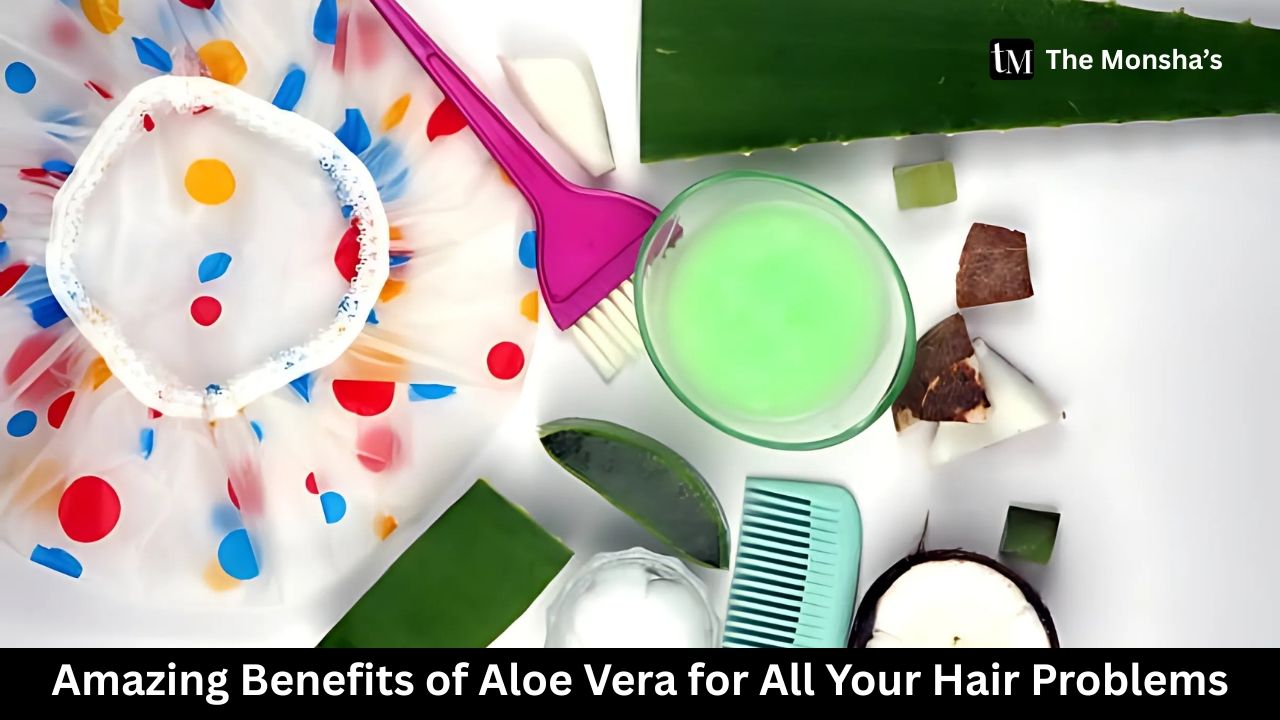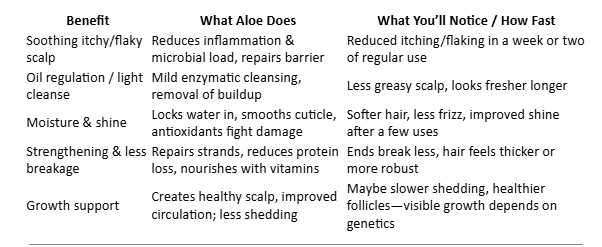
You know that sticky, cool gel inside aloe-vera leaves that drips everywhere? Turns out, it’s not just for sunburns or grandma’s favorite kitchen hack. Apply it right, and aloe can seriously rescue hair from breakage, itch, greasiness, dullness, and pretty much all the things that make you hate your reflection. Let me walk you through what studies + real life have shown, what to expect, what to avoid, and how to use aloe without turning into a frizz monster.
• Aloe vera is that squishy, cooling stuff inside the leaf—yeah, the gel that gets everywhere when you cut it open. That inner gel is packed with more than just water. It’s got vitamins (A, C, E, B12), amino acids, and minerals your scalp actually likes. And no, your shampoo probably doesn’t give you half of those.• What makes aloe special is how calming it is. If your scalp throws tantrums—gets red, itchy, flaky—aloe helps cool it down. It’s naturally soothing, fights off some germs and fungus too. Not magic, just gentle and reliable.• Fresh aloe gel (straight from the leaf) feels stickier, but works harder. It’s pure. No weird chemicals, no added perfume. Bottled aloe? Easier, less mess, but not always as strong. Depends how lazy or inflamed your scalp is feeling that day.
• If you’ve scratched your scalp raw just to stop the itch, aloe vera will feel like relief in a jar. It cools everything down and softens the flakes — especially if your dandruff’s coming from dryness or irritation, not just oil.• Regular use helps the scalp heal — you’ll feel less tightness, fewer flakes on your shoulders, and a calmer scalp overall. I noticed it especially when I applied chilled aloe before shampooing. Game-changer.
• Aloe is surprisingly good at clearing out junk from your scalp — extra oil, styling gunk, that weird residue from dry shampoo. But it doesn’t rip your scalp dry like a clarifying shampoo would.• It helps bring your scalp’s oil levels back in balance. If your roots get greasy fast but your ends are dry, aloe gives you that middle ground — fresher roots without drying out your lengths. Think of it like a mild reset button.
• Because aloe is mostly water with added nutrients, it sinks in fast and leaves hair softer without feeling coated. It’s especially helpful if your hair feels crispy from heat or just constantly thirsty.• Over time, you’ll notice less breakage and more natural shine — not the oily kind, the healthy kind. It won’t fix split ends, but it can make them behave better till your next trim. And frizz? Way more manageable.

Here are routines + recipes that actually work, based on science + a lot of trial and oily pillowcases.

I used aloe gel 2-3 times a week on my scalp + hair ends for a month. First week: scalp felt cooler, itching eased. By week 3: fewer flakes, hair ends looked a bit less ragged. Not magic, but the consistency paid off.
If I were you and trying this, I’d start with:
Yes. Aloe vera is low cost, low risk, high potential if you use it smart. It won’t fix everything instantly (genetics, severe hair loss, major scalp disease need more), but it can dramatically improve scalp health, reduce breakage, soothe irritation, and help your hair look and feel more alive. If you treat it like a tool in your haircare arsenal (not the only tool), it can outdo many expensive products.